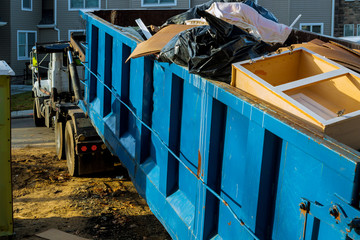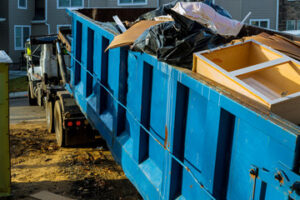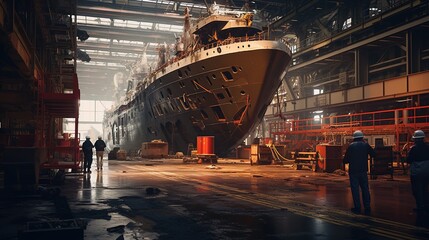Residential Concrete Contractors Dallas TX specializes in building and repairing structures made of concrete. Their duties include project planning, assessing site requirements, and overseeing the concrete pouring process.
They also work with architects, engineers, and construction professionals to ensure their concrete work seamlessly integrates with the overall structure.

When hiring a concrete contractor, look for one who has a friendly demeanor, answers your questions, and responds to your inquiries in a timely manner.
Experience
Concrete is an essential component of a number of construction projects. Getting involved in concrete work requires experience, as well as technical knowledge of the material and its applications. Contractors who have been in the business for a while are more likely to have this knowledge. They also understand how to work efficiently, which can save both time and money on a project.
If you’re looking for a concrete contractor for a commercial project, it’s important to find one with experience working on similar projects. A reputable contractor should be able to provide references from past clients, and their website should have reviews or ratings available online. You can also ask for a quote from multiple contractors before making your decision.
A good concrete contractor will be able to give you an accurate estimate of how long it will take them to complete the project. If they cannot, it is best to look for another contractor who can offer a more reasonable time estimate.
Professional concrete contractors are able to work much more quickly than the average person. This is because they have the tools and industry expertise that come from years of experience working with concrete. They are also able to cut costs by optimizing the use of materials and ensuring that no concrete is wasted.
Concrete projects can be very expensive, so it’s important to hire a contractor who can stay within your budget. You should also be sure to get a written contract that outlines all the details of your project. This will help protect you against any unexpected expenses or problems down the line.
If you’re planning on putting in a patio, driveway, or other concrete feature on your property, be sure to find out whether the contractor offers other services, such as landscaping or masonry. This can save you time and money by allowing you to hire just one contractor instead of two or more.
Becoming a concrete contractor requires training and hands-on experience with the material. Many contractors start as laborers on a concrete crew and then work their way up through the ranks to become a foreman or superintendent. They may also attend trade shows and seminars to keep up with industry trends and new technologies.
Equipment
Regardless of the size of your concrete project, you will need equipment and materials to complete the job. These include a vehicle to transport your equipment and tools, a portable mixer, concrete buckets, shovels, wheelbarrows, and basic construction supplies like safety glasses and a level. You may also need power tools, like a hammer drill, and specialty equipment, such as a grooving machine or concrete edger. You may want to purchase these items, instead of renting them, to save money and eliminate the hassle of returning them at the end of a job.
Professional concrete contractors have all of this equipment on hand, making it more efficient for them to complete projects. They also understand the importance of meeting deadlines and can provide you with an estimate of how long it will take to finish a project. This helps you plan for your construction needs and select the right contractor for the job.
A concrete contractor also has industry experience from hundreds or thousands of past projects. This extensive expertise gives them in-depth knowledge of the best strategies to do a quality job on any concrete project. They can even help you cut costs by recommending more cost-effective materials or processes.
For example, a contractor will have the proper tools for finishing concrete, including power trowels, bull floats, and screeds. These power tools ensure the concrete surface is smooth and even before it dries. They can also help you avoid low spots that weaken the concrete over time. A concrete vibrator is another essential tool that a concrete contractor will have on hand to shake the poured concrete and remove trapped air bubbles and water.
Other equipment that a contractor will have on hand includes vapor barriers or retarders, which stop moisture from evaporating from the concrete. This helps the concrete dry more quickly and reduces its overall weight. Finally, a contractor will have tools to measure and mark the concrete before pouring it. This will allow them to control the thickness of the concrete slab and minimize material waste. These tools can be purchased or rented from construction equipment providers.
License
In most cases, a concrete contractor is required to be licensed in the jurisdiction where they work. There are a few different ways to get a license, including passing an exam and posting a bond, as well as meeting other criteria, such as demonstrating experience. There are also some requirements that vary by state, such as criminal checks, financial statements, and submitting proof of workers’ compensation insurance.
One of the most important aspects of being a concrete contractor is having the right skills and knowledge to do the job correctly. This requires hands-on experience in the field, which is why many contractors pursue training through apprenticeships and internships. In addition to this, they must be familiar with building codes and have a solid understanding of the properties of different types of concrete mixes.
Another aspect of being a concrete contractor is having the necessary tools and equipment to work on the job. This includes heavy-duty mixers, a variety of hand and power tools, and concrete pumps. Additionally, they must be able to read blueprints and follow instructions to ensure the quality of their work.
In addition to having the right skills and knowledge, a concrete contractor must be able to manage projects and adhere to schedules. This is especially crucial for large projects, as delays can be costly and may impact the final product. In addition, they must be able to handle any unexpected challenges that arise during construction and be openly communicative with their clients.
It is also essential that a concrete contractor has a good track record in working with clients. They should be able to demonstrate their capabilities by providing references from previous projects and by showing examples of their work. In addition, they should have the right infrastructure in place to track project progress, such as using project management software.
The right concrete contractor will have the expertise and experience to complete your job on time and within budget. They will be able to mix and pour the concrete to create a strong, durable structure that meets all of your specifications. They will also be able to provide insight into the proper maintenance and upkeep to keep your concrete in top condition.
Insurance
Concrete contractors play a critical role in our modern world, but the work can be dangerous. They operate heavy equipment, use dangerous chemicals and are exposed to varying weather conditions. They also have the potential to injure customers and others on their job sites. As a result, concrete business owners need to take out insurance policies that offer protection from claims and lawsuits.
Most concrete contractor insurance programs include general liability and commercial property coverage. The former protects against accidents that happen on or off a job site, while the latter safeguards your property, including your building (whether owned or rented), tools and inventory. You can usually get both coverages bundled into a business owner’s policy, which will save you money on your premiums.
In addition to the basics, there are several other types of concrete contractor insurance that you may need, depending on your operations. For example, employment practices liability insurance can help pay for legal fees if an employee sues the business over sexual harassment or other illegal workplace conduct. Inland marine insurance protects your equipment and materials when they are in transit between jobs, while excess umbrella insurance provides higher liability limits than your standard policies.
Workers’ compensation insurance is required in most states and helps pay for medical costs and lost wages if an employee is injured at work. It’s important for concrete businesses to have this coverage in case someone is hurt by falling construction equipment, becomes ill from handling heavy machinery or suffers a back injury from lifting loads.
Builders risk insurance is another key type of concrete contractor insurance that covers damage to a project’s building or construction materials during the course of work. This can be helpful if an uninsured subcontractor causes damage or if natural disasters strike the site. Finally, theft and vandalism insurance protects against losses resulting from a break-in or other property damage at your business. You can often purchase this type of insurance along with other forms of commercial property and auto insurance for a discounted rate.






